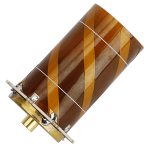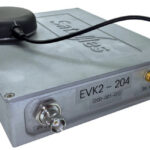Because of its vulnerabilities to spoofing and jamming, critical infrastructure can no longer rely on GNSS alone for PNT. Alternative sources must be part of the equation, which is why Adtran recently partnered with Satelles to add Satellite Time and Location (STL) capabilities to its Oscilloquartz synchronization products.
STL offers accurate, secure and augmented Iridium low Earth orbit (LEO) based PNT services that provide a backup for GNSS in denied environments. Those who operate critical infrastructure can safeguard their timing networks with STL, which also enables indoor applications. STL signals are transmitted on the L- Band, which, unlike K-Band signals, penetrate buildings.
“The LEO PNT constellation has 66 satellites very close to the Earth, so the signal is 1,000 times stronger than GPS. It can penetrate buildings for indoor applications, which is something GPS can’t do,” said Nino De Falcis, senior director of business development, Oscilloquartz, ADVA. “That eliminates a lot of the cost and pain of putting antennas on roofs. The STL signal is also encrypted, so it’s very hard to jam or spoof.”
The plan is to marry GPS and the STL service into the Adtran product portfolio, De Falcis said, with the first release expected in the second half of this year. STL will be gradually integrated into every product starting with the miniaturized accessSync devices and then the larger and more expensive edgeSync and coreSync lines. The products will allow customers to use STL as an alternative to GNSS systems and to augment them with enhanced reliability and security.
“We don’t want to go into the market and do a full replacement of their investment; we want to complement their investment with STL so we’re deploying with the miniaturized accessSync device they have today with GPS,” De Falcis said. “They will work together as two separate boxes, and then gradually the two boxes will be integrated into one and deployed in our more expensive and bigger boxes in the next three to five years.”
STL will be implemented into the hardware and customers who want to subscribe to the service would do so through Satelles. Unlike GPS, there is a fee to use STL, De Falcis said, but this is a specialized, hardened signal that provides added security.
As well as integrating STL into its grandmaster clocks, the company will develop miniature M.2 form factor STL receiver modules for third-party product integration.
The use cases
Beyond critical infrastructure, which includes the power grid and transportation, telecom customers moving into 5G private applications on the enterprise side are among those interested in the STL integration, De Falcis said. These customers know their GPS antennas are vulnerable and want the ability to use STL as a backup and to move their receivers inside. An indoor STL-synced PTP edge grandmaster can be connected to the local router, making it possible for 5G to work deep indoors without an exterior antenna.
Then there are the data centers that serve various industries, De Falcis said.
“That’s where the data lies. If you attack a data center, you can put down multiple industries at once,” De Falcis said. “We’re already engaging with these customers to offer this STL capability. They’re asking when it will be available because they need it yesterday.”
Financial markets represent another customer base, De Falcis said. Nano second accuracy is critical for trading, and a jammer or spoofer taking Wall Street down would be devastating. Having a secure timing signal from STL would help prevent that.
What’s next
Now that the STL integration has been announced, Adtran is approaching customers with interest in the service to define the minimal viable product in terms of functionality. Initially, they’re engaging with customers who have thousands of units that will need upgraded to gather letters of intent and memorandums of understanding (MOUs), De Falcis said, which will provide the resources needed to accelerate the deployment cycle.
De Falcis expects to have a prototype for selected accounts by the end of the third quarter, with the official release of the first product coming by the end of the year.
“Right now, the demand is bigger than the supply because we just made the announcement about the integration,” he said. “Now, we’re working on providing multiple products in different forms.”






